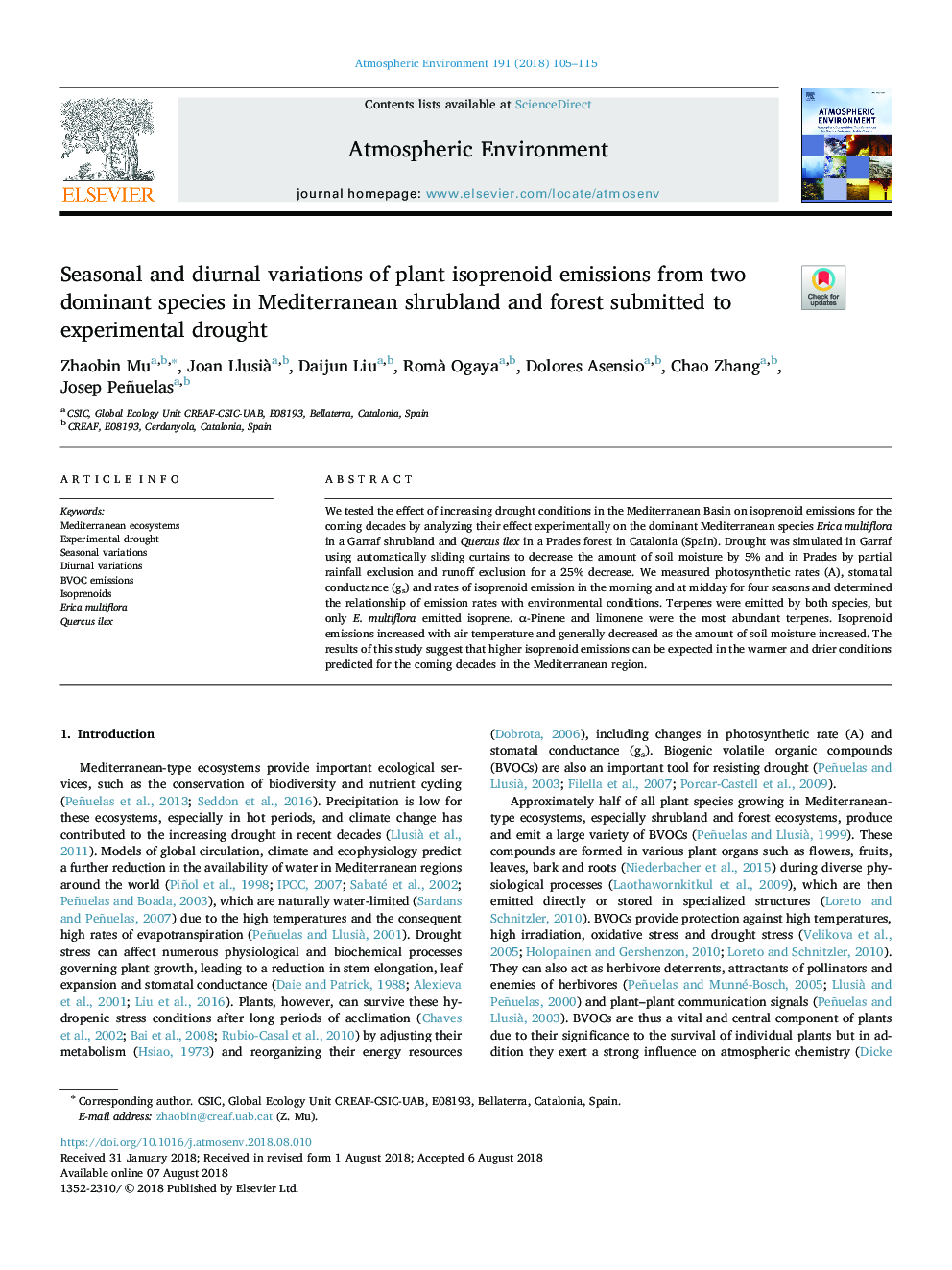| Article ID | Journal | Published Year | Pages | File Type |
|---|---|---|---|---|
| 8863381 | Atmospheric Environment | 2018 | 11 Pages |
Abstract
We tested the effect of increasing drought conditions in the Mediterranean Basin on isoprenoid emissions for the coming decades by analyzing their effect experimentally on the dominant Mediterranean species Erica multiflora in a Garraf shrubland and Quercus ilex in a Prades forest in Catalonia (Spain). Drought was simulated in Garraf using automatically sliding curtains to decrease the amount of soil moisture by 5% and in Prades by partial rainfall exclusion and runoff exclusion for a 25% decrease. We measured photosynthetic rates (A), stomatal conductance (gs) and rates of isoprenoid emission in the morning and at midday for four seasons and determined the relationship of emission rates with environmental conditions. Terpenes were emitted by both species, but only E. multiflora emitted isoprene. α-Pinene and limonene were the most abundant terpenes. Isoprenoid emissions increased with air temperature and generally decreased as the amount of soil moisture increased. The results of this study suggest that higher isoprenoid emissions can be expected in the warmer and drier conditions predicted for the coming decades in the Mediterranean region.
Related Topics
Physical Sciences and Engineering
Earth and Planetary Sciences
Atmospheric Science
Authors
Zhaobin Mu, Joan Llusià , Daijun Liu, Romà Ogaya, Dolores Asensio, Chao Zhang, Josep Peñuelas,
